Filter by
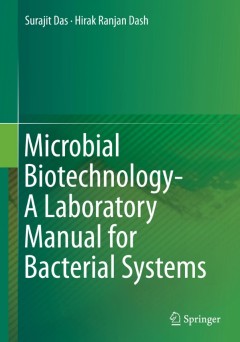
Microbial Biotechnology- A Laboratory Manual for Bacterial Systems
Microorganisms play an important role in the maintenance of the ecosystem structure and function. Bacteria constitute the major part of the microorganisms and possess tremendous potential in many important applications from environmental clean up to the drug discovery. Much advancement has been taken place in the field of research on bacterial systems. This book summarizes the experimental setu…
- Edition
- 1
- ISBN/ISSN
- 978-81-322-2094-7
- Collation
- XVI, 239
- Series Title
- -
- Call Number
- -
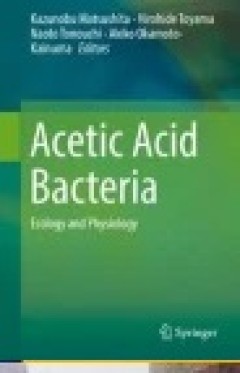
Acetic Acid Bacteria: Ecology and Physiology
This book provides all facets of acetic acid bacteria (AAB) and offers the future targets and directions of AAB research. It summarizes the distinctive physiological properties of AAB and the recent progress on AAB study, especially in the following five areas: 1) Molecular phylogeny and genome study of AAB; 2) Ecological features of AAB: interaction with plants, natural fermentation systems, a…
- Edition
- Ed. 1
- ISBN/ISSN
- 978-4-431-55933-7
- Collation
- VIII, 350
- Series Title
- -
- Call Number
- 576 ACE a

Environmental and Microbial Relationships
This volume provides insights into current research on fungal populations, communities and their interactions with other organisms. It focuses on fungal responses to the physical environment; interactions with bacteria, other fungi, invertebrates and plants; the role of fungi in ecosystem processes such as decomposition and nutrient cycling; and aspects of biogeography and conservation. Since …
- Edition
- -
- ISBN/ISSN
- 978-3-319-29532-9
- Collation
- 15 b/w illustrations, 25 illustrations in colour
- Series Title
- -
- Call Number
- -
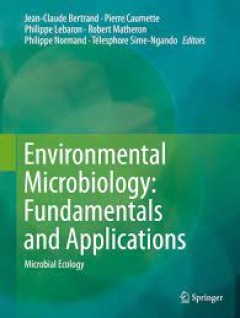
Environmental Microbiology: Fundamentals and Applications Microbial Ecology
This book is a treatise on microbial ecology that covers traditional and cutting-edge issues in the ecology of microbes in the biosphere. It emphasizes on study tools, microbial taxonomy and the fundamentals of microbial activities and interactions within their communities and environment as well as on the related food web dynamics and biogeochemical cycling. The work exceeds the traditional do…
- Edition
- -
- ISBN/ISSN
- 978-94-017-9118-2
- Collation
- 77 b/w illustrations, 489 illustrations in colour
- Series Title
- -
- Call Number
- -
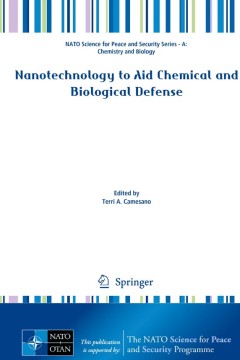
Nanotechnology to Aid Chemical and Biological Defense
This book presents research into chemical, biological, radiological and nuclear (CBRN) defense and environmental security, exploring practical implications of the research. Contributions from a diverse group of international civilian researchers present the latest work on nanotechnology problems in this area, looking at detection, protective technologies, decontamination and threats to environm…
- Edition
- 1
- ISBN/ISSN
- 978-94-017-7217-4
- Collation
- XIV, 221
- Series Title
- NATO Science for Peace and Security Series A: Chemistry and Biology
- Call Number
- -

Encyclopedia of Metagenomics Genes, Genomes and Metagenomes. Basics, Methods…
Metagenomics has taken off as one of the major cutting-edge fields of research. The field has broad implications for human health and disease, animal production and environmental health. Metagenomics has opened up a wealth of data, tools, technologies and applications that allow us to access the majority of organisms that we still cannot access in pure culture (an estimated 99% of microbial lif…
- Edition
- -
- ISBN/ISSN
- 978-1-4899-7478-5
- Collation
- 39 b/w illustrations, 178 illustrations in colour
- Series Title
- -
- Call Number
- -

Their World: A Diversity of Microbial Environments
This volume summarizes recent advances in environmental microbiology by providing fascinating insights into the diversity of microbial life that exists on our planet. The first two chapters present theoretical perspectives that help to consolidate our understanding of evolution as an adaptive process by which the niche and habitat of each species develop in a manner that interconnects individua…
- Edition
- -
- ISBN/ISSN
- 978-3-319-28071-4
- Collation
- -
- Series Title
- -
- Call Number
- -
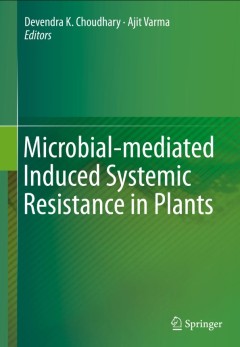
Microbial-mediated Induced Systemic Resistance in Plants
With a focus on food safety, this book highlights the importance of microbes in sustainable agriculture. Plants, sessile organisms that are considered as primary producers in the ecosystem and communicate with above- and below-ground communities that consist of microbes, insects, and other vertebrate and invertebrate animals, are subjected to various kinds of stress. Broadly speaking, these can…
- Edition
- 1
- ISBN/ISSN
- 978-981-10-0387-5
- Collation
- X, 226
- Series Title
- -
- Call Number
- -
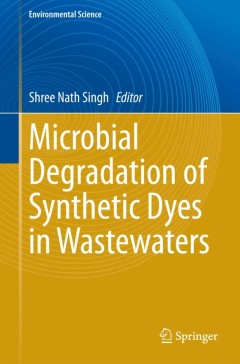
Microbial Degradation of Synthetic Dyes in Wastewaters
Today synthetic dyes are used extensively in the textile dyeing, paper printing, color photography, pharmaceuticals, food and drink, cosmetic and leather industries. As of now, over 100,000 different dyes are available, with an annual production of over 700,000 metric tons. These industries discharge an enormous amount of colored effluents into natural water bodies, with or without treatment. T…
- Edition
- 1
- ISBN/ISSN
- 978-3-319-10941-1
- Collation
- XIV, 367
- Series Title
- Environmental Science and Engineering
- Call Number
- -
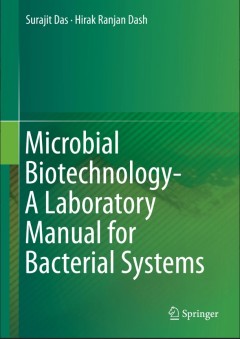
Microbial Biotechnology- A Laboratory Manual for Bacterial Systems
Microorganisms play an important role in the maintenance of the ecosystem structure and function. Bacteria constitute the major part of the microorganisms and possess tremendous potential in many important applications from environmental clean up to the drug discovery. Much advancement has been taken place in the field of research on bacterial systems. This book summarizes the experimental setu…
- Edition
- 1
- ISBN/ISSN
- 978-81-322-2094-7
- Collation
- XVI, 239
- Series Title
- -
- Call Number
- -
 Computer Science, Information & General Works
Computer Science, Information & General Works  Philosophy & Psychology
Philosophy & Psychology  Religion
Religion  Social Sciences
Social Sciences  Language
Language  Pure Science
Pure Science  Applied Sciences
Applied Sciences  Art & Recreation
Art & Recreation  Literature
Literature  History & Geography
History & Geography